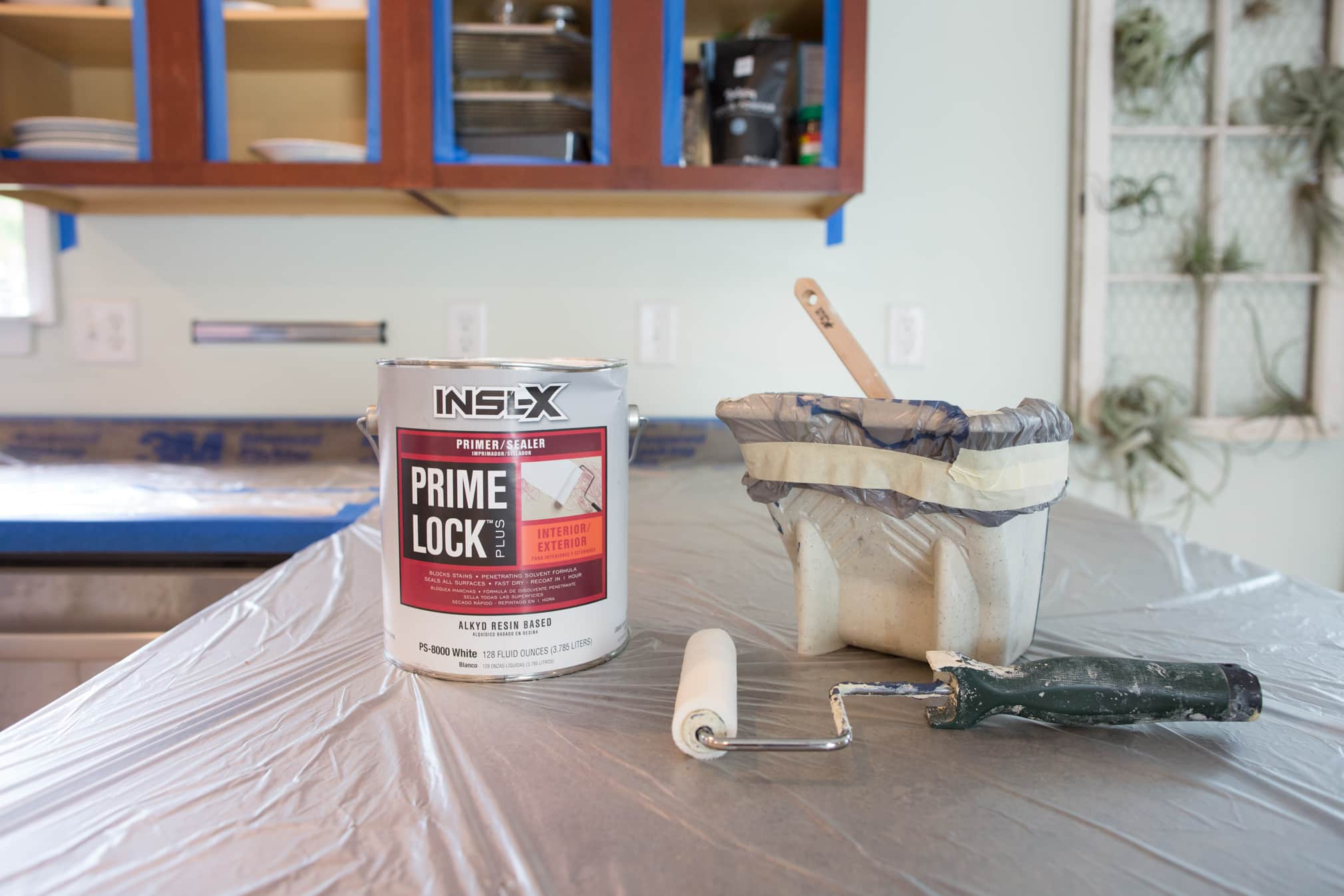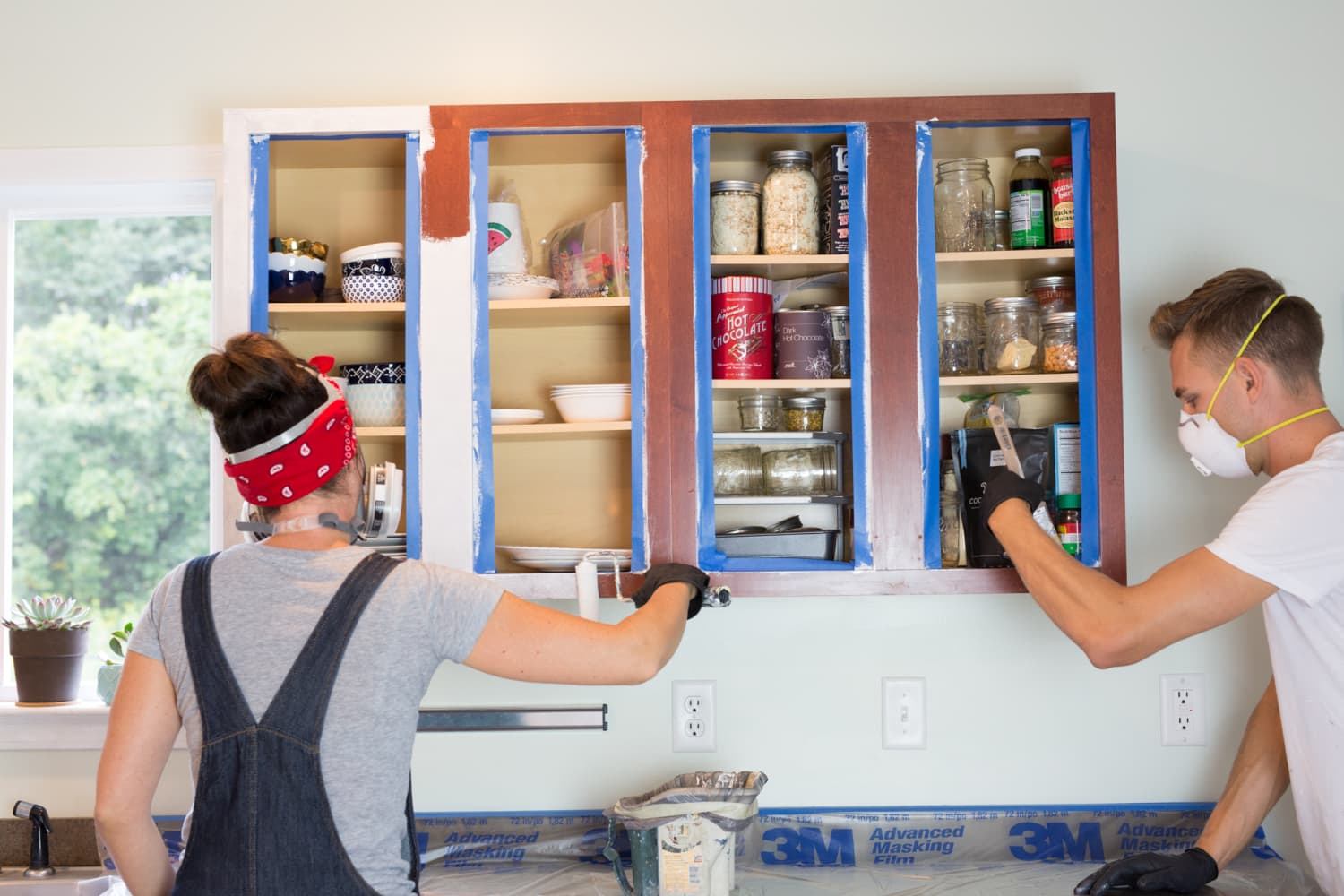Types of Primers for Kitchen Cabinets: What’s The Best Primer For Kitchen Cabinets

Choosing the right primer is crucial for a successful kitchen cabinet makeover. The primer acts as a bridge between the existing surface and your chosen paint, ensuring adhesion, preventing bleed-through, and providing a smooth, even finish. The type of primer you select will depend on several factors, including the material of your cabinets and the desired outcome. Let’s delve into the world of primers to find the perfect match for your project.
Primer Types and Their Suitability for Different Cabinet Materials
The choice of primer hinges significantly on the substrate. Oil-based, water-based, and shellac-based primers each possess unique properties that make them better suited to specific materials like wood, laminate, and melamine. Understanding these differences will help you achieve the best results.
| Primer Type | Wood | Laminate | Melamine |
|---|---|---|---|
| Oil-Based | Excellent adhesion, durable finish, good for porous woods. | Generally suitable, but requires thorough cleaning and sanding. | Not recommended; may not adhere properly. |
| Water-Based | Good adhesion, low odor, easy cleanup, suitable for most woods. | Good option, often requires less surface preparation than oil-based. | Can work well with proper surface preparation, often requires a bonding primer first. |
| Shellac-Based | Excellent for sealing knots and preventing bleed-through, good for porous woods. | Not ideal; may not adhere well. | Not recommended; may not adhere properly. |
Advantages and Disadvantages of Different Primer Types
Each primer type presents its own set of advantages and disadvantages. Consider these factors when making your selection.
| Primer Type | Advantages | Disadvantages |
|---|---|---|
| Oil-Based | Excellent adhesion, durable, blocks stains effectively. | Strong odor, long drying time, difficult cleanup (requires mineral spirits). |
| Water-Based | Low odor, fast drying time, easy cleanup (water-based), environmentally friendly. | May require multiple coats for complete coverage, less durable than oil-based in some cases. |
| Shellac-Based | Excellent for sealing, fast drying, good for preventing bleed-through. | Can be sensitive to moisture, not as durable as oil-based primers, requires careful application. |
Visual Representation of Primer Application
Imagine the process for each primer type:
Oil-Based Primer: Picture a thick, creamy liquid being applied with a brush, perhaps a high-quality bristle brush for smooth strokes. The application is deliberate, allowing the primer to flow evenly. The drying process is slow, often requiring several hours between coats. Cleanup involves the use of mineral spirits and careful attention to avoid lingering odor.
Water-Based Primer: Visualize a thinner, more easily spreadable liquid, applied with either a brush, roller, or even a spray gun for larger surfaces. The application is quicker and cleaner, with less dripping. The drying time is significantly faster, often allowing for multiple coats in a single day. Cleanup is a simple matter of soap and water.
Shellac-Based Primer: Envision a clear, slightly viscous liquid, applied with a brush, often in thin, even coats. The application requires a steady hand to avoid streaks. The drying is exceptionally fast, allowing for rapid layering. Cleanup is usually straightforward with denatured alcohol.
Choosing the Right Primer Based on Cabinet Condition and Finish

The journey to stunning kitchen cabinets begins long before the final coat of paint. Selecting the right primer is crucial; it’s the unsung hero that ensures a smooth, durable, and beautiful finish. The primer you choose depends heavily on the current state of your cabinets and the look you’re aiming for. Ignoring this critical step can lead to uneven paint application, peeling, and a less-than-perfect final result. Let’s delve into the art of primer selection.
Primer Selection for Cabinets with Existing Finishes, What’s the best primer for kitchen cabinets
Preparing cabinets with existing finishes – whether paint, varnish, or lacquer – requires careful attention to detail. A thorough cleaning and proper surface preparation are paramount to ensure the primer adheres correctly and prevents peeling or chipping. Failing to adequately prepare the surface will result in a subpar finish, no matter how high-quality the primer is. Here’s a step-by-step guide to prepping your cabinets:
- Thorough Cleaning: Begin by washing the cabinets with a degreasing cleaner to remove any grease, grime, or old wax buildup. A solution of warm water and mild dish soap often suffices, followed by a thorough rinse and complete drying.
- Light Sanding: Gently sand the existing finish with fine-grit sandpaper (220-grit or higher) to create a slightly rough surface for better primer adhesion. Focus on smoothing any imperfections and removing any loose or flaking paint. Avoid aggressive sanding that could damage the underlying wood.
- Dust Removal: After sanding, meticulously remove all dust particles using a tack cloth or a slightly damp cloth. Any remaining dust will compromise the primer’s bond.
- Primer Application: Apply a bonding primer specifically designed for adhesion over existing finishes. Apply thin, even coats, allowing each coat to dry completely before applying the next. Follow the manufacturer’s instructions regarding drying time.
Primer Selection Based on Cabinet Material
The material of your cabinets significantly impacts primer selection. Different materials have unique properties requiring primers formulated for optimal adhesion and performance.
- Wood Cabinets: Wood is a porous material, and a good quality oil-based or shellac-based primer is often recommended. These primers penetrate the wood, providing excellent adhesion and preventing the wood from absorbing too much of the topcoat, leading to a more even finish. Oil-based primers are known for their excellent blocking properties, sealing in stains and odors. Shellac-based primers offer a fast drying time and excellent adhesion, making them suitable for a variety of topcoats.
- Laminate Cabinets: Laminate is a non-porous surface, so a primer designed for adhesion to smooth surfaces is necessary. A high-quality acrylic or alkyd-based primer with good adhesion properties is ideal. These primers provide a smooth surface for the topcoat to adhere to, preventing peeling and chipping.
- Melamine Cabinets: Melamine, similar to laminate, is a non-porous surface. Again, a primer designed for smooth surfaces is crucial. An acrylic-based primer is often a good choice, ensuring proper adhesion and preventing the topcoat from chipping or peeling. It’s vital to properly clean and degloss the melamine surface before applying the primer.
Primer Selection Based on Desired Final Finish
The final finish you desire—high-gloss, matte, or semi-gloss—influences the type of primer you should choose. The primer acts as a base, affecting the final appearance and durability.
| Primer Type | Ideal Final Finish |
|---|---|
| Oil-based primer | High-gloss, semi-gloss |
| Acrylic primer | Matte, semi-gloss, high-gloss |
| Shellac-based primer | High-gloss, semi-gloss |
Application Techniques and Best Practices
Transforming your kitchen cabinets with a fresh coat of paint begins long before the color shows—it starts with the primer. Applying primer correctly is crucial for a smooth, durable, and long-lasting finish. This process involves more than just slapping some paint on; it’s about meticulous preparation and careful application techniques to ensure a professional-looking result.
Proper primer application involves a series of steps, each designed to maximize adhesion and create the perfect canvas for your topcoat. Failing to follow these steps can lead to uneven coverage, peeling, and a final product that simply doesn’t live up to expectations.
Surface Preparation
Before even thinking about the primer, your cabinets need a thorough cleaning. Grease, grime, and old finishes will prevent the primer from adhering properly. Use a degreaser specifically designed for kitchen surfaces, followed by a thorough rinsing and complete drying. Any loose paint or chipping should be carefully scraped away, and any imperfections like scratches or dents should be filled with wood filler and sanded smooth. The key is to create a perfectly clean and even surface. Once this is done, lightly sand the entire surface with fine-grit sandpaper (around 220 grit) to create a slightly rough texture that helps the primer grip. Wipe down the cabinets again with a tack cloth to remove any dust particles. This meticulous preparation is the foundation for a flawlessly primed surface.
Primer Application Methods
The method you choose—brush, roller, or spray—will depend on your skill level, the size of your project, and the level of detail required. Brushes are excellent for detailed work and getting into corners, but they can leave brush strokes if not applied carefully. Rollers provide a faster, more even coat, particularly on larger, flat surfaces, but they might not reach all the nooks and crannies. Spraying offers the fastest and most even application, but requires more specialized equipment and proper ventilation. Regardless of your chosen method, remember to apply thin, even coats, allowing each coat to dry completely before applying the next. Over application can lead to drips and runs.
Drying Time and Ventilation
Allowing adequate drying time between coats is essential. Refer to the manufacturer’s instructions on the primer can for the recommended drying time, which will vary depending on the type of primer and environmental conditions (temperature and humidity). Proper ventilation is also crucial, especially when using spray primers or working in an enclosed space. Primer fumes can be harmful, so always work in a well-ventilated area, preferably outdoors or with windows and doors open. A respirator mask is recommended to protect against inhalation of primer fumes.
Safety Precautions
Working with primers, like any paint product, requires careful attention to safety. Neglecting these precautions can lead to health issues or accidents.
- Always wear appropriate personal protective equipment (PPE), including gloves, eye protection, and a respirator mask, especially when using spray primers.
- Work in a well-ventilated area to prevent the buildup of harmful fumes. Open windows and doors, or use exhaust fans.
- Keep primers out of reach of children and pets.
- Follow the manufacturer’s instructions carefully regarding application, drying time, and cleanup.
- In case of skin contact, immediately wash the affected area with soap and water. If fumes are inhaled, seek fresh air immediately. For eye contact, flush with water for at least 15 minutes and seek medical attention if necessary.

